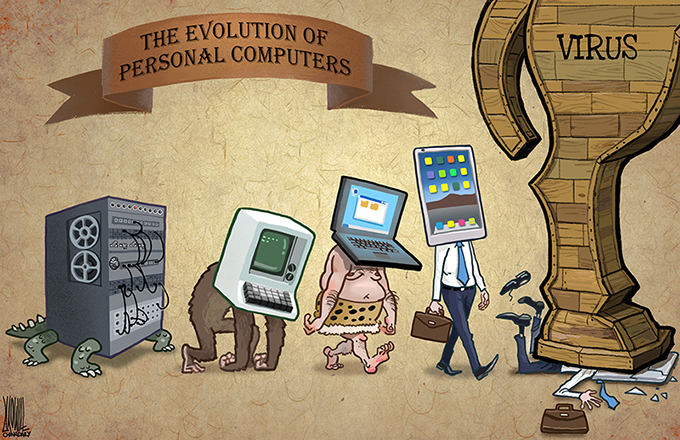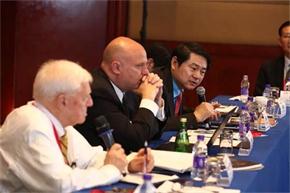Time for a 'Belt and Sea Lane' for Latin America
President Xi Jinping will host dozens of world leaders on Sunday and Monday at the Belt and Road Forum for International Cooperation, as China's Belt and Road Initiative has seized world wide attention. Right after this important event, the Chinese government should take advantage of the major shifts in the Americas, look across the Pacific and launch a parallel effort: the "Belt and Sea Lane" initiative for China and Latin America (Mexico, the Caribbean, and Central and South America).
Three recent seismic changes have dramatically affected Latin America. First, the economic links that China has developed over the past 13 years with South America. Second, the end of populism in this region. Third, the election of Donald Trump as president of the United States, which will severely damage economic integration in the Americas, as shown by the recent demise of the US-led Trans-Pacific-Partnership agreement. Let us broadly review these three waves to understand the opportunity for China.
South America swayed from the "lost half decade" of 1998-2003, to the "golden decade" of 2004-14, and this change happened mainly because of China. South American nations are rich in minerals, energy and food, which China started buying at growing prices and in ever increasing volumes. China is the main purchaser and price driver for commodities; whether it is copper from Chile, soybeans from Argentina or Paraguay, iron ore and grains from Brazil, gold from Peru, beef from Uruguay, tin from Bolivia, oil from Venezuela and Ecuador, or coal from Colombia.
This economic link became crystal clear in the US financial crisis of 2008 that slowed down the economies of Mexico, Central America and the Caribbean (CAC), which all depend heavily on exports to the US market and remittances from there, but South America kept growing so long as China kept growing. The dividing line became clear: in Latin America, south of the Panama Canal the economic driver is China, north of the Panama Canal it still is the US.
China has become the main buyer of South American commodities, a more important lender and an active investor. The challenge remains to have China become a full blown, long-term development partner for South America.
The Chinese influence in Mexico-CAC is different. Here China is viewed as a competitor for access to the US market with manufactured goods (Mexico) and textiles (CAC), as well a price hiker for food products, and fuel that CAC needs to import. So the Chinese economic influence is dominant in South America. The US has been the prevailing influence in Mexico and CAC, until Trump was elected. The future for Mexico and CAC is now uncertain.
With sky-high commodity prices, South America was governed according to the Hugo Chavez project in Venezuela, the Workers Party (PT) in Brazil, the Kirchner power couple in Argentina, and other like-minded projects in the region. South American coffers were filled by Chinese purchases of oil, grains and minerals, as populist regimes reigned over South America. There was a tendency to nationalize companies, spend freely, set low unsustainable consumer prices, close off free trade and not be very friendly to foreign investment in general.
With the commodity price decline since 2014(especially oil prices) and voters fed up with and tired of corruption and abuses of populist regimes, the tide turned. More countries now have market-friendly governments. The end of populism in South America bodes well for China, as the current governments are more open to Chinese investment, more open to trade and can assure a better structural framework to collaborate with China.
For the first time in its history, the US has elected a president who combines a protectionist trade position with an anti-migration policy. Trump has particularly targeted Mexico, promising to deport 11 million people, to build a wall by seizing remittances sent from the US, to hike duties for manufactured goods and abrogate the North American Free Trade Agreement. This is very worrisome for Mexico, but it also affects many countries in Latin America that have citizens sending remittances from the US. The trade disruption will eventually affect all CAC countries, aswell as Chile, Colombia and Peru, that all have similar free trade treaties with the US.
Taking into account the economic interdependence between China and South America, the end of populism in South America, and the dramatic threats that the Trump administration poses to Mexico and CAC, it is clear that time, circumstances and events are providing a significant opening for China to propose a full-blown partnership with Latin America.
The proposal should seize the opportunity of the "demise" of the Trans-Pacific Partnership agreement. Mexico now needs reliable partners, unlike the US; so will CAC very soon; and South America needs to deepen its strong trade ties with China.
President Xi Jinping can take advantage of his strengthened position as the core leader of China, his commitment to address climate change and his stance as the world's free trade leader, which will help China to extend its Belt and Road Initiative toward Latin America, across the Pacific, with a "Belt and Sea Lane" proposal. The basic elements of it should be trade, loans, investment and respect for human dignity (No deportations. No discrimination). A new trade framework, the active presence of the China-led Asian Infrastructure Investment Bank in Latin America and the expansion of Confucian Institutes should be part of this initiative. Latin America is ready and ripe for such a proposal.
This is the right time to show that while some want to build walls to divide and separate, China wants to build a bridge across the Pacific to integrate and link Asia and Latin America.
Just one opportunity illustrates the potential of a deeper China-Latin America partnership. China is the world's leading manufacturer of lithium batteries, close to 90 percent of the world's lithium reserves are in South America. Our new, deeper partnership can easily prevail in the race to lead the new wave of lithium batteries for cleaner, more efficient development in the 21st century.
The window of opportunity is now the Belt and Sea Lane Initiative for a stronger China-Latin America partnership.
The author is former president of Bolivia.





















